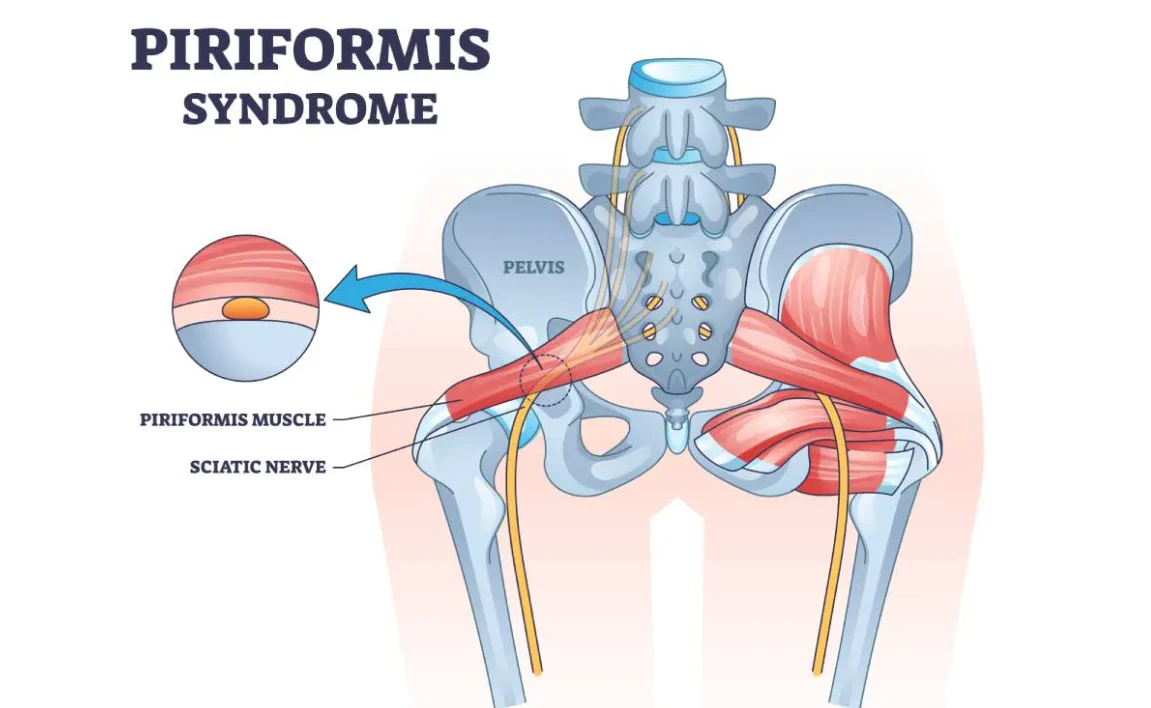Piriformis syndrome causes pain or numbness in your butt, hip or upper leg. It occurs when the piriformis muscle presses on the sciatic nerve. The condition may be caused by injury, swelling, muscle spasms or scar tissue in the piriformis. Most episodes go away in a few days or weeks with rest and simple treatments.
Piriformis syndrome occurs when your piriformis muscle compresses your sciatic nerve and results in inflammation. It can cause pain or numbness in your buttock and down the back of your leg. It can happen on one side of your body or both.
The piriformis is a flat, narrow muscle. It runs from your lower spine through your butt to the top of your thighs. Your piriformis muscle extends to each side of your body and aids in almost every movement of your lower body.
The sciatic nerve most commonly runs underneath the piriformis. The nerve travels from your spinal cord, through your buttocks, down the back of each leg, to your feet. It’s the longest, largest nerve in your body.
What’s the difference between piriformis syndrome versus sciatica?
Although the conditions are sometimes related and both affect the sciatic nerve, they are different.
A herniated disk or spinal stenosis can cause sciatica. The symptoms tend to affect the lower back and can travel down through the buttocks and leg.
Piriformis syndrome only involves the piriformis muscle pressing on one area of the sciatic nerve in the buttock. It can feel a lot like sciatica but in a more specific area.
What causes piriformis syndrome?
Anything that makes the piriformis press on the sciatic nerve can cause piriformis syndrome.
The most common piriformis syndrome causes are:
- Inflammation (swelling) in the piriformis or the tissues around it.
- Muscle spasms.
- Scarring in the muscle.
These issues can result from:
- Climbing stairs, walking or running without strong enough piriformis muscles.
- Injuring the hip, butt or leg, such as a fall or car accident.
- Having tight muscles from lack of physical activity.
- Lifting something improperly and damaging the piriformis muscle.
- Not warming up before physical activity or stretching properly afterward.
- Overexercising or performing repetitive motions, such as long-distance running.
- Sitting for long periods of time (for example, people who sit a lot on the job).
What are the symptoms of piriformis syndrome?
Piriformis syndrome symptoms occur in the butt, hip or upper leg. People often describe the feeling as:
- Aching.
- Burning.
- Numbness.
- Pain.
- Tingling.
- Shooting.
Symptoms may get worse during certain activities, such as:
- Sitting for long periods of time.
- Walking or running.
- Climbing stairs.
Management and Treatment
How is piriformis syndrome treated?
Piriformis syndrome treatment may include:
- A few days of rest.
- Home exercises to stretch or strengthen the piriformis.
- Nonsteroidal anti-inflammatory drugs (NSAIDs).
- Massage, as complementary medicine.
- Medications that relax the muscles.
- Piriformis syndrome physical therapy that focuses on stretching and strengthening the piriformis.
- Steroid injections.
- Botulinum toxin injections (Botox®).
Piriformis syndrome surgery is usually not recommended unless all other therapies fail. Surgery for this condition may involve removing scar tissue or other sources of pressure on the nerve.






